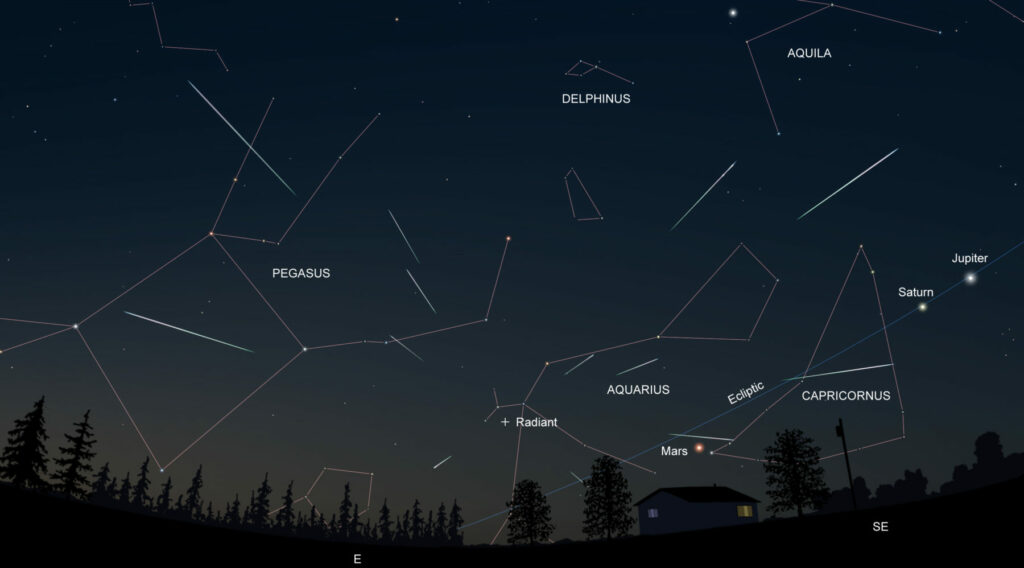Early May brings the opportunity to see a shower of shooting stars produced by meteor dust left by Halley’s Comet. They are known as the Eta Aquariids and observers can see them from most parts of the world.

Conditions are good for observing the Eta Aquariids in 2024 because the Moon will be a waxing crescent and set in the early morning hours on the night of maximum, 5/6 May. Meteors may be seen for a few days either side of this date.
This shower – often simply known as the Eta Aquarids, with a single i – is particularly favourable for people in the tropics and southern hemisphere because Aquarius, the constellation from which the meteor particles radiate, lies in the southern part of the zodiac. For a shower’s meteors to appear, the radiant has to be above your local horizon.
The radiant rises late in the night from all parts of the world, so this is a shower to observe in the early morning hours. If you live in southerly locations such as Australia, New Zealand, South Africa, or South America, you might have three or four hours to watch before dawn.
Observers at more northerly latitudes will have a more restricted time of between one and two hours to watch for the meteors from the time the radiant rises until dawn twilight brightens the sky.

As stated earlier, the night of maximum, when peak rates can be seen, is on 5/6 May, but it is a broad peak and good rates may be seen for a few nights either side of this date. The shower began producing meteors in late April and activity will continue until late May with reduced meteor numbers.
The Eta Aquariids are typically swift-moving in the sky and many of the brighter ones leave glowing persistent trains after the initial streak has appeared.
At its best, the shower is expected to give a zenithal hourly rate (ZHR) or 50. This is a hypothetical figure that would occur under ideal conditions with the radiant directly overhead. In practice, the radiant will be much lower before daylight intrudes.
Southern Hemisphere observers might see 25 to 30 meteors an hour at best and those in the north, such as the UK, rest of Europe and the USA, a lower rate still.

However, with a clear, dark sky, it will be worth sitting out away from the streetlights to see what occurs. Occasionally the shower springs a surprise and delivers enhanced rates, so be ready for the unexpected!
Don’t expect to see Halley’s Comet itself! That was last around in 1985-6 and won’t be back in the inner Solar System until 2061. Most meteor showers are produced from streams of dust that have spread along the orbits of comets over thousands of years.
Halley’s Comet is actually the parent of two meteor showers seen during every year. The other is the Orionids in October.
Related: Our guide to observing meteors
As well as observing visually, you can try to photograph the meteors if you have a camera that can take a time exposure.
Related: How to photograph a meteor shower
For more details of what to see in May’s night sky, see our monthly sky guide.




